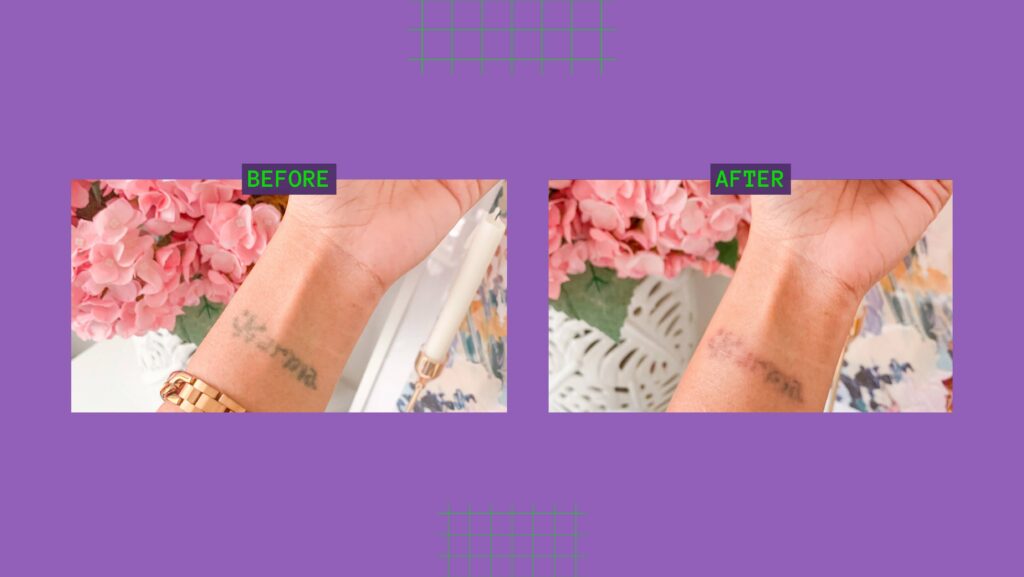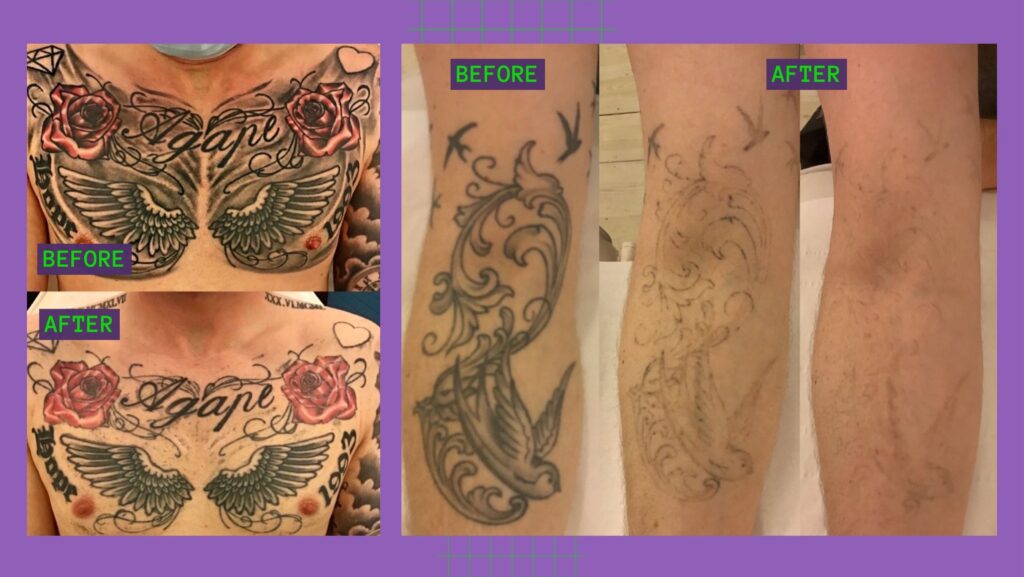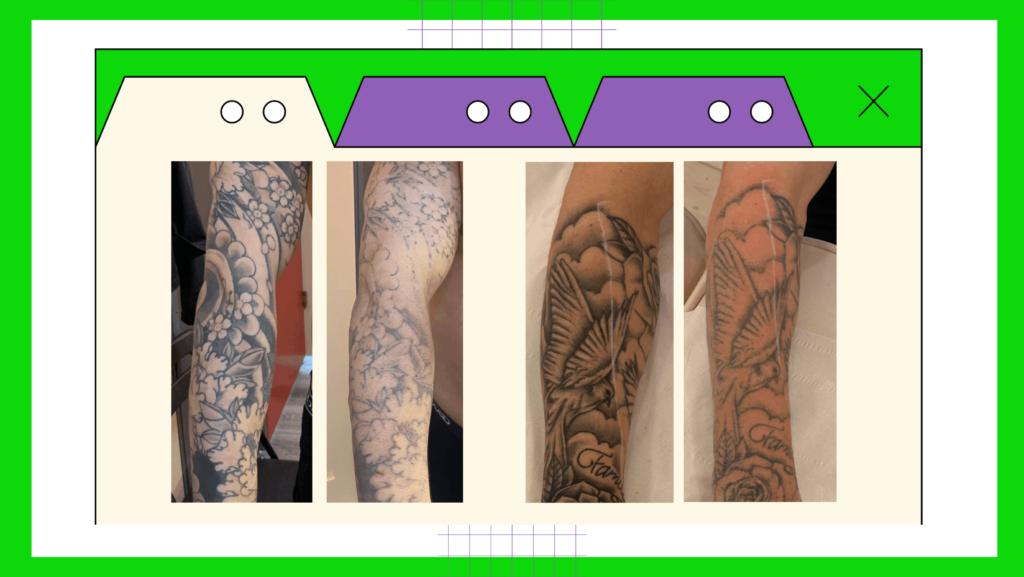In 2021, the tattoo removal industry was worth a staggering £102m, and is expected to grow by 9.6% by 2030. Now more than ever, laser tattoo removal is an accessible option for people who are sick of looking at their bad ink.
One such person is Roxy James, a lifestyle blogger and CEO of stationery company It’s Pretty Productive. She is currently in the process of having “karma” removed from her left wrist, a tattoo she thought was “fabulous” at the time, but after staring at it for over a decade, she decided she wanted it gone.
“I became an expert at hiding it, but over time I realised I just wanted it gone altogether,” she says. “I also started getting a deep feeling that I wanted to do something life-changing and, as silly as it may seem, having it gone was my own version of starting over.”

Due to the small size of her tattoo, Roxy’s sessions only lasted around six minutes, but that’s more than enough time to feel the pain of the laser. “I won’t sugar coat it,” says Roxy. “It hurt more than getting the tattoo done in the first place. It felt like a sting every time the laser zapped me,” she says. “It would have taken less time if it wasn’t for all the breaks I shamelessly took.”
After the session, Roxy experienced some swelling around the area, but that disappeared after an hour. But while the swelling disappeared, the tattoo seemed to reappear. “When you are lasering, it looks as if the tattoo immediately disappears, but it shows back up once the swelling has gone down. Don’t be too alarmed, you will definitely need more than one session. For me, after my first session, I noticed immediate fading in some letters, so I was really happy about that,” she says.
“I started getting a deep feeling that I wanted to do something life changing and, as silly as it may seem, having it gone was my own version of starting over”
Dan Leonard, the director and laser practitioner at Zapp Laser Studio, explains the process of removal involves either a Q-switched laser or a PicoSure laser. The former, he explains, has been around for 20 to 30 years, but they don’t all have the same effect. “There’s a huge range of them that will burn and scar and not remove the tattoo,” he says. Whereas the latter, used at Zapp Laser Studio, is the newer form that “fires harder and faster than standard laser”.
“Pressure waves push through the skin, hit the ink, and shatter it into tiny particles. The body then absorbs it and disposes of it through your lymphatic system and circulation,” says Dan. “Most tattoos now, with newer technology, can be fully removed as if nothing’s ever been there.
“Anything further away from the heart is slower to treat because your body has to work a lot harder [to break down the ink]. How the tattoo is applied, when it was applied, by who, with what type of ink, whether there’s scarring, and the colours can all make a difference.”

There are also some factors that could prevent you from getting laser tattoo removal altogether. Dan says those with “skin damage and scarring from the application of the tattoo” cannot go under the laser, as well as people with autoimmune deficiencies and cancer patients. Those unable or unwilling to go through laser tattoo removal may want to consider a blackout tattoo – a growing phenomenon appealing to those who are sick of cover ups.
Though with modern PicoSure laser technology tattoos are no longer permanent, the removal process is not easy. Clients will not only need to tolerate intense pain, but also pay large sums of money for it, sometimes over £1,000.
Before taking the physical and financial plunge of getting laser tattoo removal, Dan suggests doing your research into the clinics that provide the service. “Don’t just base it on price, and don’t just base it on location,” he says. Take time to think before you brave the laser.
Read the rest of our SKiN Stories series here: https://mccs-journalism.gold.ac.uk/wp/skin/author/rrobi001/

